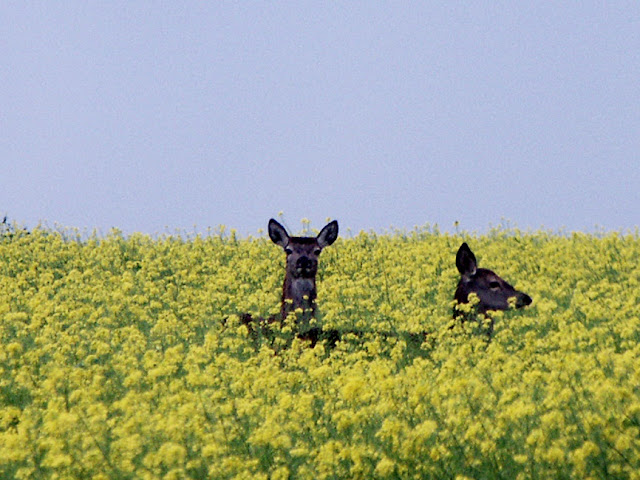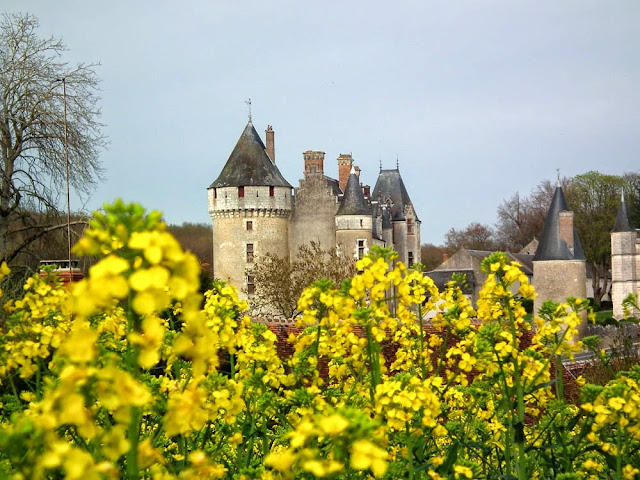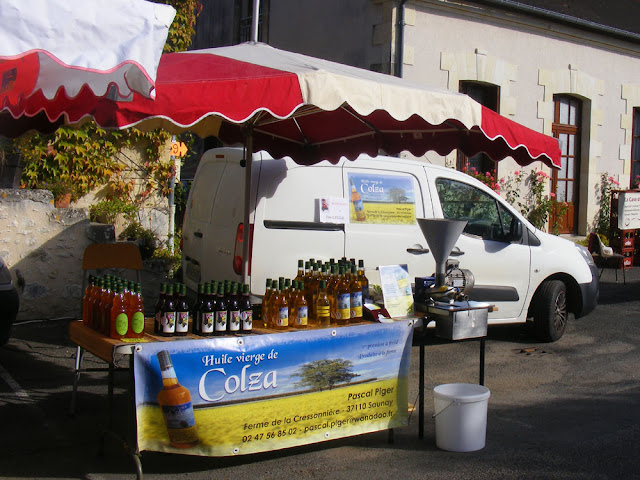A typical spring scene in the Pays Saumurois, the countryside around the town of Saumur. Lots of grapes, some wheat, some ploughed earth, some canola, a narrow winding bitumen road and on the highest ground, mixed deciduous broadleaf forest.
The canola (Fr. colza) is in flower again. It's widely grown as a crop here to produce oil, biodiesel and a high protein stock feed (which is actually a by-product after the oil is extracted). Only palm and soybean are more important globally as oil producing crops. The EU is the biggest producer, followed by Canada and the US. It is favoured as a source of biodiesel because canola produces more oil per hectare than other oil seed crops and freezes at a lower temperature than other oils.
Bees love it and many of the apiarists here will sell a pale creamed or set honey labelled colza. The honey crystalises easily, which is a nuisance for the beekeeper and the crop can cause a boom and bust situation in the hive. It flowers relatively early, but doesn't last very long, so if the bees don't have anything to move on to it can be a disaster for them. On the arable farms where canola is grown crop margins where wild flowers might grow are getting smaller and smaller. These days the bees are in real danger of starving after the canola finishes flowering.
Roe Deer in agricultural rape grown as an autumn cover crop. This cousin of canola is a good nitrogen fixer, suppresses weeds and prevents erosion. Roe Deer find the flowers irresistable.
Canola is prone to fungal diseases and invertebrate attack as a crop and is typically sprayed with fungicide about 8 times between late August when it is planted and early June when it is harvested. It will be liberally sprinkled with slug pellets when young, and sprayed with insecticide to treat flea beetle when mature.
A canola crop in flower near the Chateau of Montpoupon.
A few producers process their crop on the farm. The oil produced is virgin, that is to say, it is the product of the first pressing, unmixed with later pressings. According to this producer, before the pressing the seeds are meticulously sorted to make sure any insect contamination is removed. The oil is extracted, using a technique that does not raise the temperature of it beyond 50°C. Contrary to normal practice the oil is not then filtered. Instead it is left to settle and slowly decanted. The finished product is clear and delicate, and has retained all its nutritional components and aromas. Use it for flavouring and cooking but it is not suitable for frying.






No comments:
Post a Comment